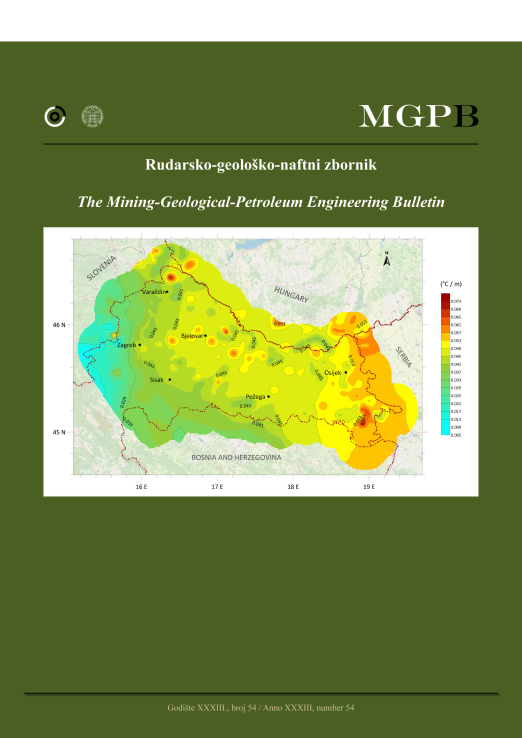Changes of thermocline depth at the Sumba Island offshore based on planktonic foraminiferal assemblages and its implication to eutrophication since the Last Deglaciation (~18 ka BP): a preliminary study
DOI:
https://doi.org/10.17794/rgn.2021.3.3Keywords:
Australian–Indonesian monsoon, applied micropaleontology, Indonesian Throughflow, Lesser Sunda Islands, paleoceanographyAbstract
Changes of the thermocline depth (DOT) at the Sumba Island offshore are not well-known compared to the DOT changes in the Timor Sea, the main exit passage of the Indonesian Through-flow (ITF). Planktonic foraminiferal assemblages in cores collected from the southwest Sumba offshore (ST08) and Sumba Strait (ST12, ST13, and ST14) were used as a tool to infer the DOT and paleoproductivity changes at the Sumba Island offshore. The DOT changes were indicated from the thermocline and mixed layer dwellers’ relative abundance while the paleoproductivity changes were indicated from the relative abundance of Neogloboquadrina dutertrei. This study suggests a contrast between the DOT pattern at the Sumba Island offshore and the DOT pattern in the Timor Sea during the Last Deglaciation–Holocene. The contrast DOT pattern indicated that the multi-millennial changes of the Australian-Indonesian monsoon (AIM) during the Last Deglaciation–Holocene were the main factors behind the DOT changes in this region while the effects of El Nino Southern Oscillation (ENSO) –like, Indian Ocean Dipole (IOD) –like, and ITF to DOT changes were minimal. Paleoproductivity enhancement at the Sumba Island offshore was not solely related to the monsoon-driven coastal upwelling intensification, which resulted in the DOT shoaling and eutrophic condition. The increase of nutrient availability in surface water due to river runoff increase and changes in the lifted water mass nature were also able to enhance productivity in this region.
Downloads
Published
How to Cite
Issue
Section
License
Copyright (c) 2021 authors and journal

This work is licensed under a Creative Commons Attribution 4.0 International License.
Creative Commons-BY
Authors who publish with this journal agree to the following terms:
In agreeing this form, you certify that:
- You read the ethical codex of the RGN zbornik available at journal web.
- You submitted work is your original work, and has not previously been published and does not include any form of plagiarism.
- You own copyright in the submitted work, and are therefore permitted to assign the licence to publish to RGN zbornik.
- Your submitted work contains no violation of any existing copyright or other third party right or any material of an obscene, libellous or otherwise unlawful nature.
- You have obtained permission for and acknowledged the source of any illustrations, diagrams or other material included in the work of which you are not the copyright owner.
- You have taken due care to ensure the accuracy of the work, and that, to the best of your knowledge, there are no false statements made within it.
- All co-authors of this submitted work are aware of, and in agreement with, the terms of this licence and that the submitted manuscript has been approved by these authors.
Publication licence
You retain copyright in your submitted work, according to journal license policy (CC-BY). By signing this form you agree that RGN zbornik may publish it under the publication licence. In summary the licence allows the following:
Anyone is free:
- To copy, distribute, display, and perform the work.
- To make derivative works.
Under the following conditions:
- The original author must always be given credit.
- The work may not be used for commercial purposes.
- If the work is altered, transformed, or built upon, the resulting work may only be distributed under a licence identical to this one.
Exceptions to the licence
In addition to publishing the work printed under the above licence, RGN zbornik will also enable the work to be visible online.
The journal editorial can change the licence rules anytime but it cannot retroactively restrict author(s) rights.


